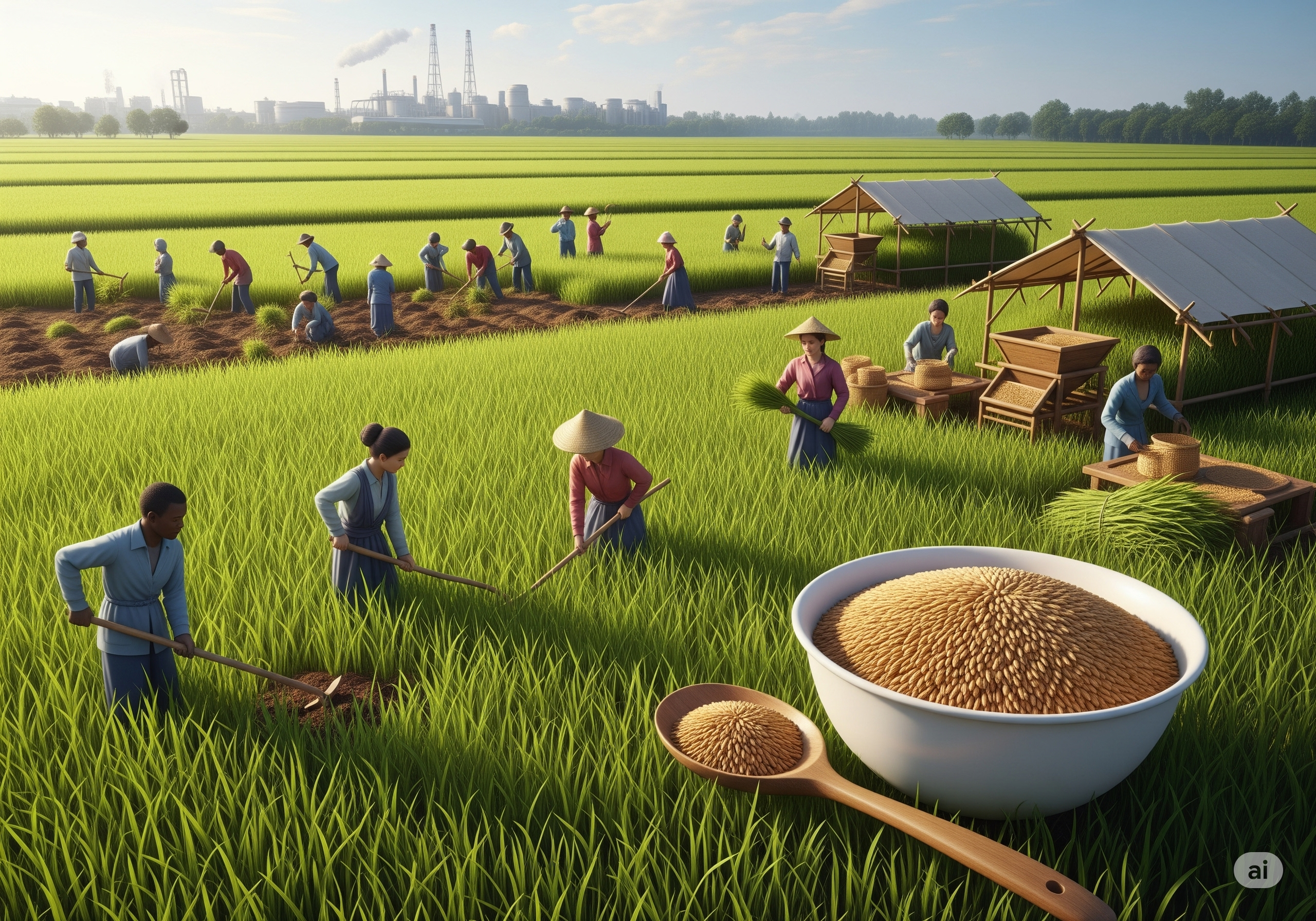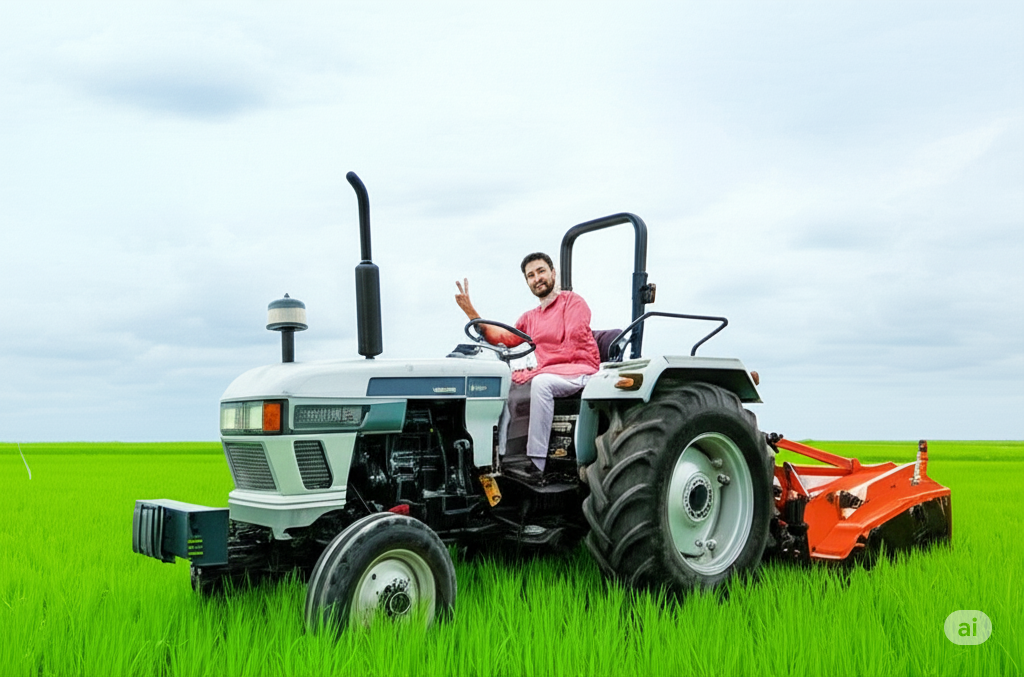

The Golden Grain from the Subcontinent: The Enduring Legacy of Indian Parboiled Rice
In the intricate tapestry of global food systems, rice holds an unparalleled position, and within this vast domain, Indian Parboiled Rice carves out a distinct and highly significant niche. It is not merely rice that has undergone a specific processing method; it represents a deep-rooted agricultural tradition, a cornerstone of regional cuisines, and a formidable force in India's status as a leading global food exporter. Its journey from paddy fields across the Indian subcontinent to plates in diverse corners of the world embodies a blend of ancient wisdom, modern innovation, and profound economic importance.
The practice of parboiling rice is deeply ingrained in India's agricultural history, with evidence suggesting its origins on the subcontinent thousands of years ago. Ancient texts and archaeological findings point to early methods where paddy was soaked, heated, and dried before milling. This rudimentary process, often carried out by rural communities, was primarily adopted for two practical reasons: it made the husking process easier for hard-to-mill paddy varieties and significantly reduced grain breakage, especially with traditional milling techniques. What was perhaps an incidental discovery — the improved keeping quality and subtle change in flavor — paved the way for a culinary and nutritional revolution. Over centuries, these traditional, labor-intensive methods, often involving large vats and sun-drying, evolved into the highly sophisticated, large-scale industrial operations that characterize India's modern parboiled rice industry. This long-standing heritage makes Indian parboiled rice not just a product, but a cultural legacy.
The parboiling process in India, whether traditional or industrial, fundamentally involves three key stages:
Soaking: Raw paddy is steeped in water, often warm or hot, allowing the moisture to permeate the rice kernel. This hydration is crucial for the subsequent stages.
Steaming: The soaked paddy is then subjected to steam under controlled conditions. This critical step causes the starch within the rice kernel to gelatinize. Crucially, during this phase, water-soluble nutrients, particularly B vitamins (like thiamine, riboflavin, and niacin), along with minerals, migrate from the outer bran layer and husk into the starchy endosperm. This effectively "locks in" a significant portion of the nutrients that would otherwise be lost during the conventional milling of white rice. The steaming also hardens the kernel.
Drying: After steaming, the paddy is carefully dried. This reduces the moisture content to optimal levels for storage and milling, preventing mold growth and ensuring the rice maintains its integrity.
Once dried, the parboiled paddy is milled to remove the husk, bran, and germ, yielding the characteristic translucent, yellowish-tinted grains. While it appears different from raw white rice, this coloration largely disappears upon cooking, resulting in a fluffy, separate-grained rice that boasts a superior nutritional profile compared to regular white rice.
Indian parboiled rice is renowned for its nutritional superiority. The unique processing method significantly enhances its vitamin and mineral content. Compared to raw white rice, Indian parboiled rice retains a much higher percentage of B vitamins (especially Thiamine/B1), magnesium, iron, and zinc. This makes it a more wholesome and fortified staple, particularly beneficial in regions where dietary deficiencies are common. Furthermore, the parboiling process alters the starch structure, leading to a lower glycemic index (GI). This slower release of glucose into the bloodstream is a significant advantage for managing blood sugar levels, making it a preferred choice for individuals with diabetes or those seeking sustained energy.
India's diverse agro-climatic zones cultivate a wide array of rice varieties, many of which are specifically chosen for their suitability for parboiling. Popular Indian parboiled rice varieties widely traded and consumed include:
IR64 Parboiled Rice: One of the most common and globally traded varieties, known for its long grain, non-stickiness, and excellent cooking characteristics.
Sona Masuri Parboiled Rice: A medium-grain aromatic variety, particularly popular in South India, valued for its soft texture and subtle flavor when parboiled.
Ponni Parboiled Rice: Another medium-grain variety, widely consumed in South India, known for its versatility and soft texture.
BPT 5204 (Swarna) Parboiled Rice: A popular short-to-medium grain variety, especially in West Bengal and Andhra Pradesh, prized for its fluffiness after cooking.
Each variety brings its unique attributes to the table, catering to diverse culinary demands and consumer preferences worldwide.
In Indian cuisine, parboiled rice is not just a side dish; it's an integral component of many iconic preparations. Its non-sticky nature and firm texture make it perfect for fluffy Biryanis and Pulaos, where each grain remains separate and infused with flavor. In South India, it is the preferred choice for grinding into batter for fermented staples like Idli (steamed rice cakes) and Dosa (savory crepes), contributing to their distinct texture and fermentation properties. It's also widely used in various Khichdi preparations, which are comforting rice and lentil dishes. The resilience of parboiled rice to overcooking makes it highly convenient for bulk cooking in community kitchens and institutional settings.
Economically, India stands as a global powerhouse in parboiled rice production and export. The country's vast agricultural land, diverse rice varieties, advanced milling infrastructure, and established trade networks position it as a formidable leader in the international rice market. Indian parboiled rice is a significant contributor to the nation's agricultural GDP and foreign exchange earnings. Countries across the Middle East (UAE, Saudi Arabia, Oman), Africa (Kenya, Djibouti, Somalia, Ghana, Madagascar), and parts of Southeast Asia heavily rely on imports of Indian parboiled rice to meet their food security needs. Its superior shelf life, resistance to pest infestation during transit, and consistent quality make it highly desirable for large-scale international procurement and distribution.
Despite its strong position, the Indian parboiled rice sector faces challenges, including maintaining consistent quality across diverse milling units, ensuring sustainable water management for cultivation, and navigating the complexities of global trade policies and price fluctuations. However, the future remains bright. Continuous investment in research and development for improved rice varieties, modern processing technologies, and efficient supply chain management will further strengthen India's dominance. The increasing global awareness of the nutritional benefits of parboiled rice, coupled with its excellent cooking characteristics and long shelf life, ensures sustained and growing international demand.
In conclusion, Indian parboiled rice is a testament to the nation's rich agricultural heritage and its dynamic role in feeding the world. It is a grain that embodies resilience, nutrition, and versatility. From the ancient fields where it was first discovered to the bustling ports from which it is exported, Indian parboiled rice continues to be a golden thread in the fabric of global food security, sustaining lives and enriching cuisines across continents.